
Last week I talked about how I photograph fireworks at Walt Disney World. This week I will use the same technique of a tripod, cable shutter release and setting the shutter speed to Bulb in Manual exposure mode. This allows me to control how long the shutter will be open. So, what’s different? I am adding a new piece of equipment called a Neutral Density filter to the front of the lens.
Neutral Density filters allow less light to enter the lens. Think of them as sunglasses for your camera. I know what you are thinking, Scott has finally lost his mind. For years, I have been telling you to get as much light as possible through the lens to get the best exposures. However, landscape photographers for years have used neutral density filters to INCREASE the shutter times when they want to photograph moving objects in their landscapes like waterfalls. Long shutter speeds for waterfalls create the silky look of water flowing over time.
The same idea works for fireworks. A neutral density filter extends the amount of time the shutter can be open without getting completely blown out explosions and rocket trails. These filters are referred to as ND and come in different strengths. I purchased a kit of three ND filters (see link below): ND2 or 0.3 (1 f-stop), ND4 or 0.6 (2 f-stops) and ND8 or 0.9 (3 f-stops). As you can see, the higher the ND number, the more light it blocks in f-stops.
What it means to us is, if you leave a camera’s aperture and ISO the same, the stronger the ND filter, the longer the shutter speed. I do not want to get bogged down in photographic math but here’s an example: If I set my camera to an aperture of f/8 and ISO 200 on a bright sunny day, I get a shutter speed of 1/200th of a second. If I put an ND2 filter on the lens, the light will be cut in half or 1 full f-stop for a shutter speed of 1/100th of a second. ND4 filter makes it to 1/50th of a second and the ND8 filter brings it all the way down to 1/25th of a second. If you are photographing a moving subject, the difference between 1/200 and 1/25 is huge! More on this later.
Back to our fireworks, using the Blub method and no ND filter last week, I could not go much longer than a few seconds without getting blown out (all white) fireworks explosions and trails. In fact, I did get some which I discarded. In the photos below, I used the strongest ND filter I had, the ND8 (3 f-stops). I could now hold the shutter open for 10, 20, 30, 60 seconds or maybe longer. I have seen some photos on flickr go over 120 seconds (2 minutes) for IllumiNations in Epcot and still look very colorful.
In the Magic Kingdom, I set up for Wishes which is very different from IllumiNations. I tried some really long exposures at first which went in between the scenes of the show. They did not look to good. Running out of time, I decided to open the shutter at the beginning of a scene and close it at the end. Remember my tip on using youTube last week to learn when a scene starts and ends. Once I did that, the long exposures worked much better. The fireworks looked great just as the show Imagineers wanted them to.
The first scene I want to show you is Fantasia featuring the part where Mickey Mouse is the Sorcerer’s Apprentice and gets in over his head. The reds of the fireworks with the blue Cinderella Castle conjures up the scene very well.

The Fantasia scene of Wishes fireworks show.
Nikon D700/28-300VR, 28.7s, f/16, ISO 200, EV +0.3, 52mm focal length, tripod, ND8 filter
The next scene is when the Villains take over the show. Lots of strange and bright colors and villainous lighting on the castle.
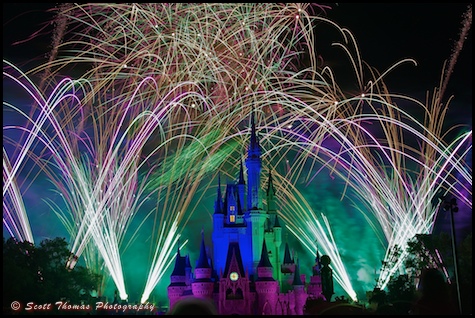
The Villains scene of Wishes fireworks show.
Nikon D700/28-300VR, 66.9s, f/16, ISO 200, EV +0.3, 52mm focal length, tripod, ND8 filter
This is the first 12 seconds of the Wishes grand finale. I like this as there is neutral lighting on the castle as the fireworks frame it.
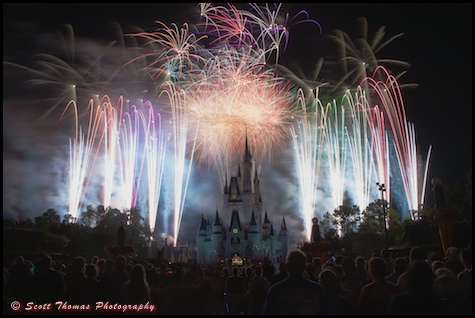
Twelve seconds of the Finale of Wishes fireworks show.
Nikon D700/28-300VR, 12s, f/16, ISO 200, EV +0.3, 52mm focal length, tripod ND8 filter
Getting back to the math part. Instead of using a waterfall to demonstrate the use of a neutral density filter during the day, I used the ever popular Dumbo, the Flying Elephant, ride in Fantasyland. Without an ND filter, the slowest shutter speed I could get was 1/15th of a second at an aperture of f/25 and ISO of 200. As you can see, the Dumbos are blurred but you can still see what they are.
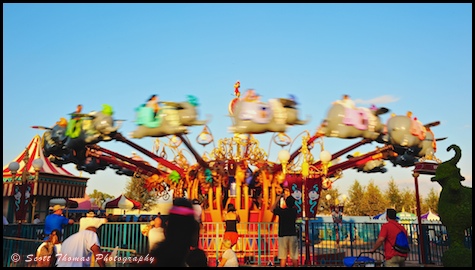
Dumbo ride without a Neutral Density filter.
Nikon D700/28-300VR, 1/15s, f/25, ISO 200, EV +0.6, 38mm focal length
I put on the ND8 filter and the shutter speed drops to a little less than 1/2 of a second. Quite the dramatic change.
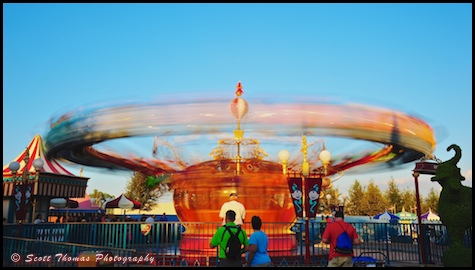
Dumbo ride with a Neutral Density filter.
Nikon D700/28-300VR, 0.63s, f/25, ISO 200, EV +0.6, 38mm focal length, tripod ND8 filter
If you are interested in using these filters for your photography, I highly recommend the Dolica CF-NDK77 77mm 0.3, 0.6, 0.9ND Neutral Density Filter Kit. The filters are thin and can be stacked. Dolica has other filter sizes but I would look at getting step up rings so you don’t have to buy multiple filters for different sized lenses.


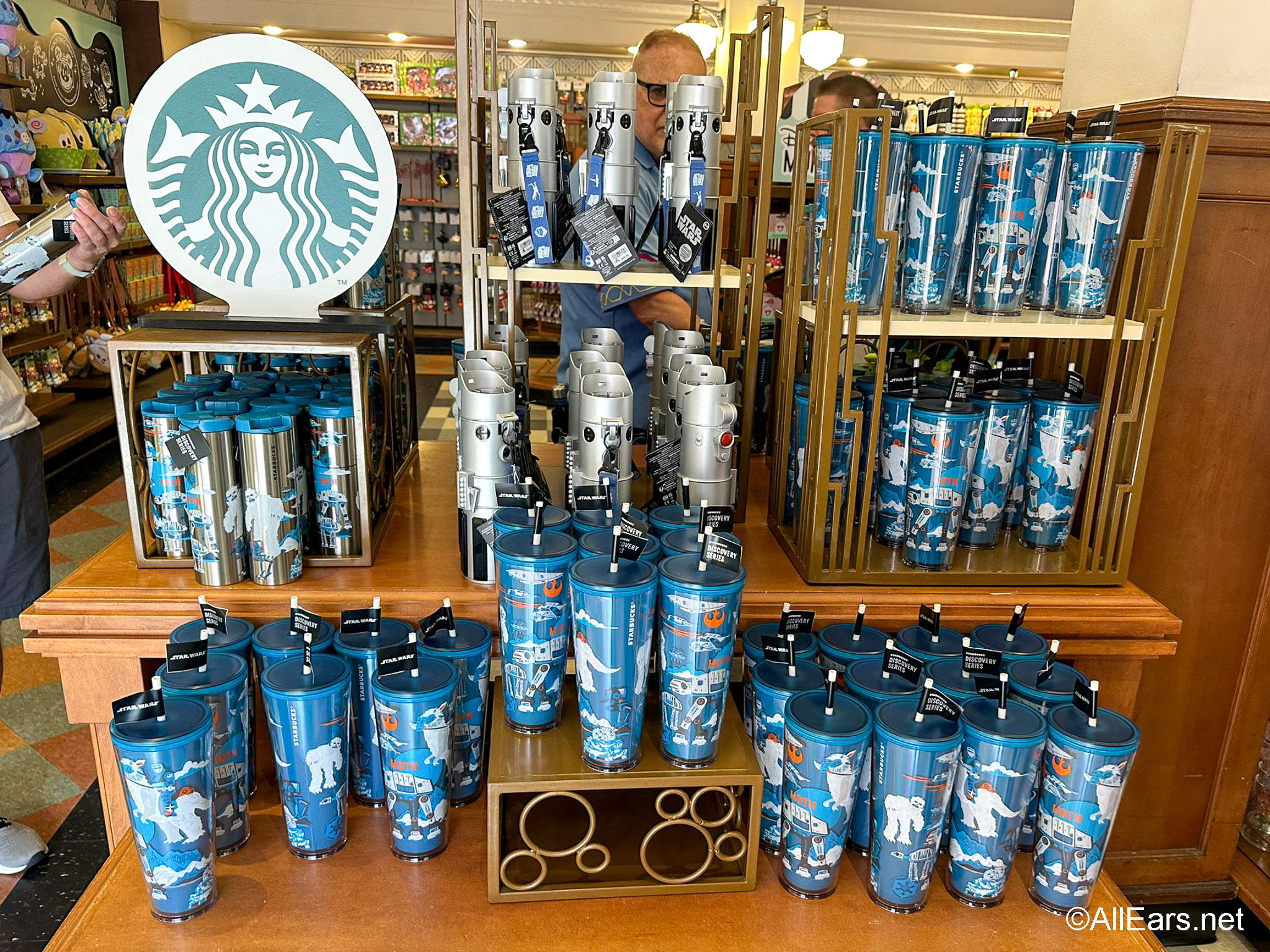
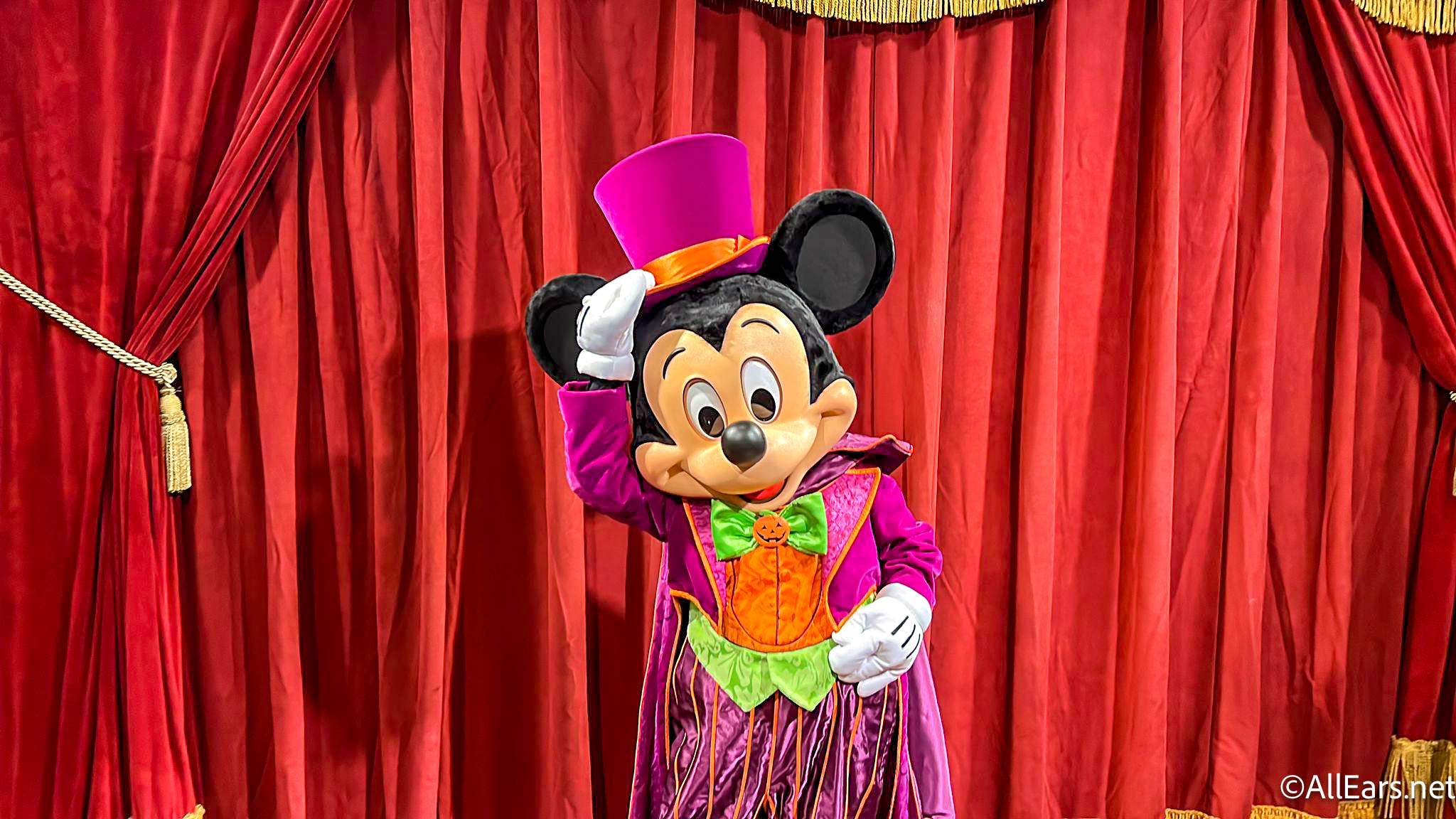


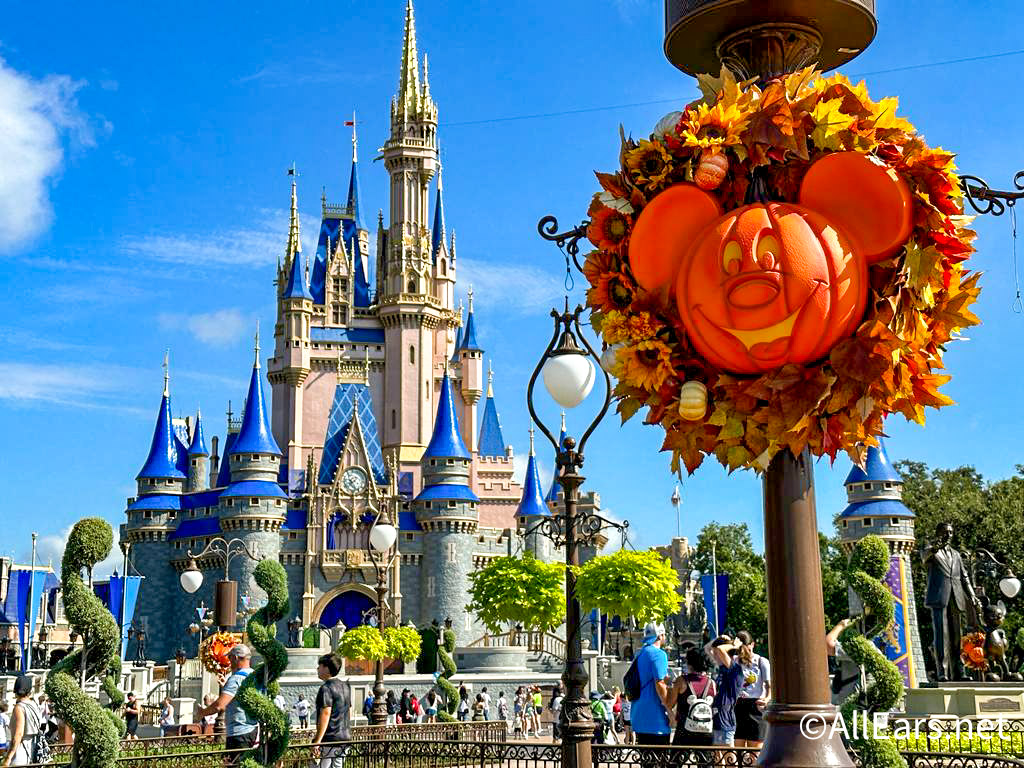
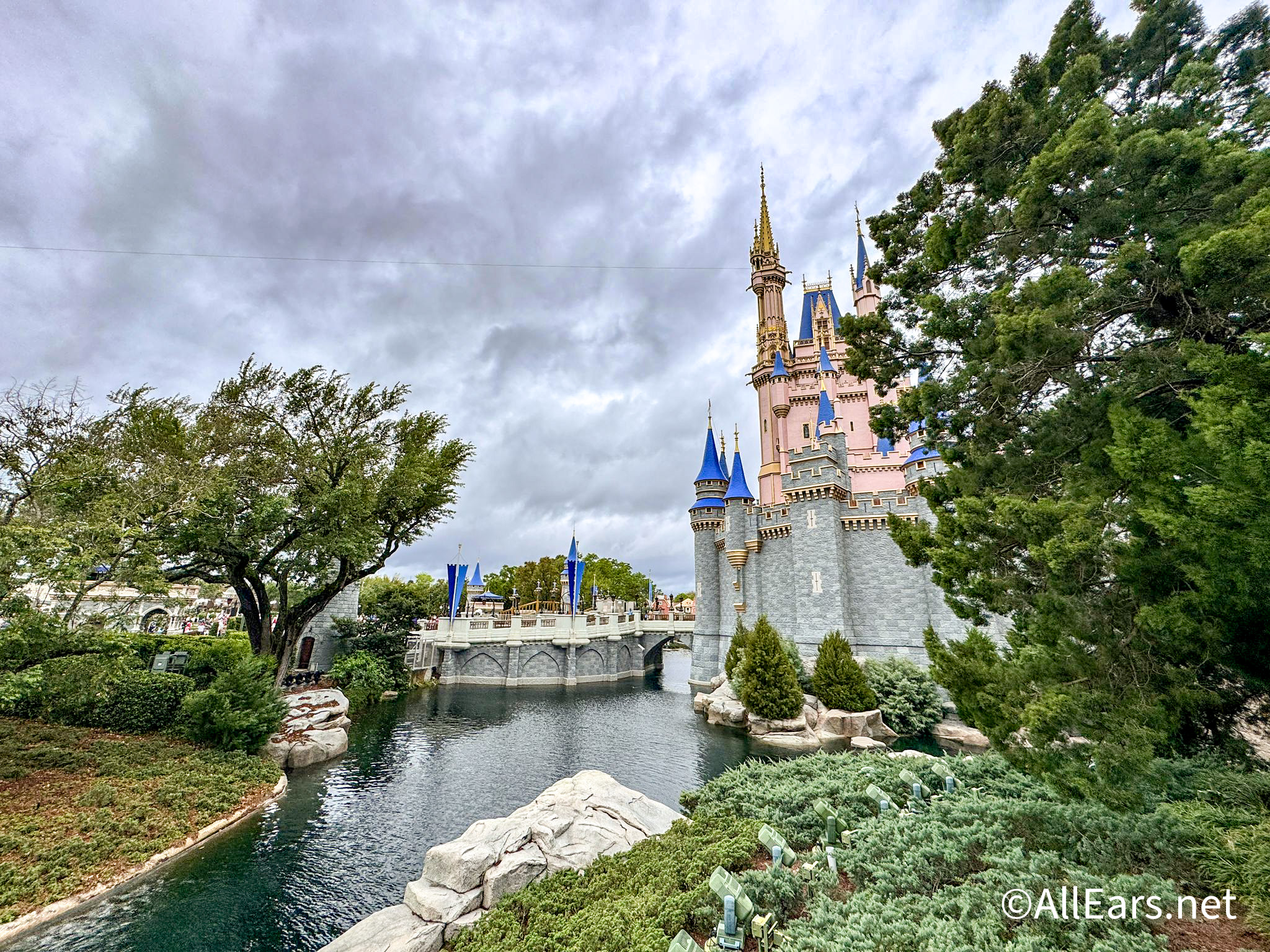
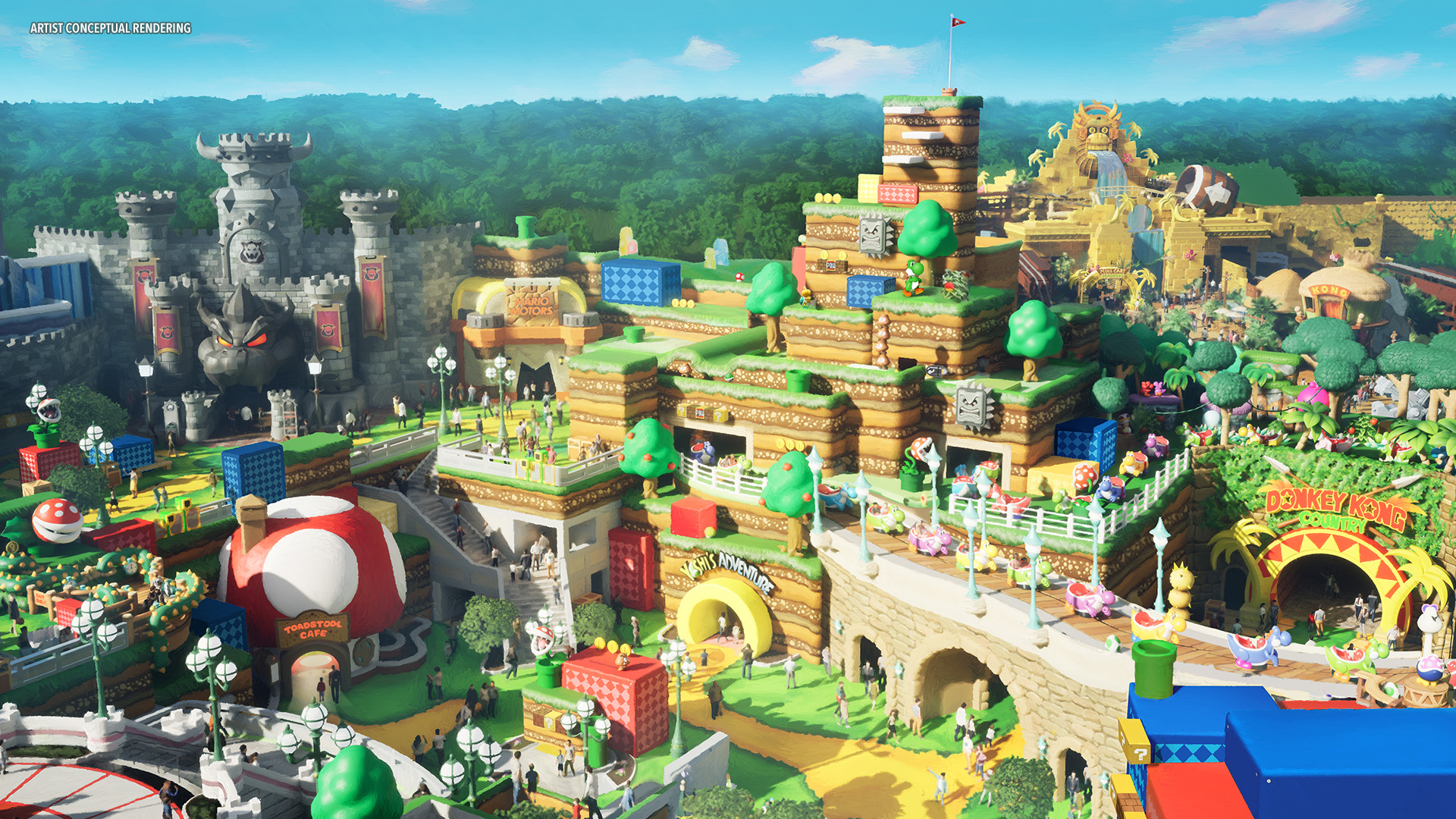
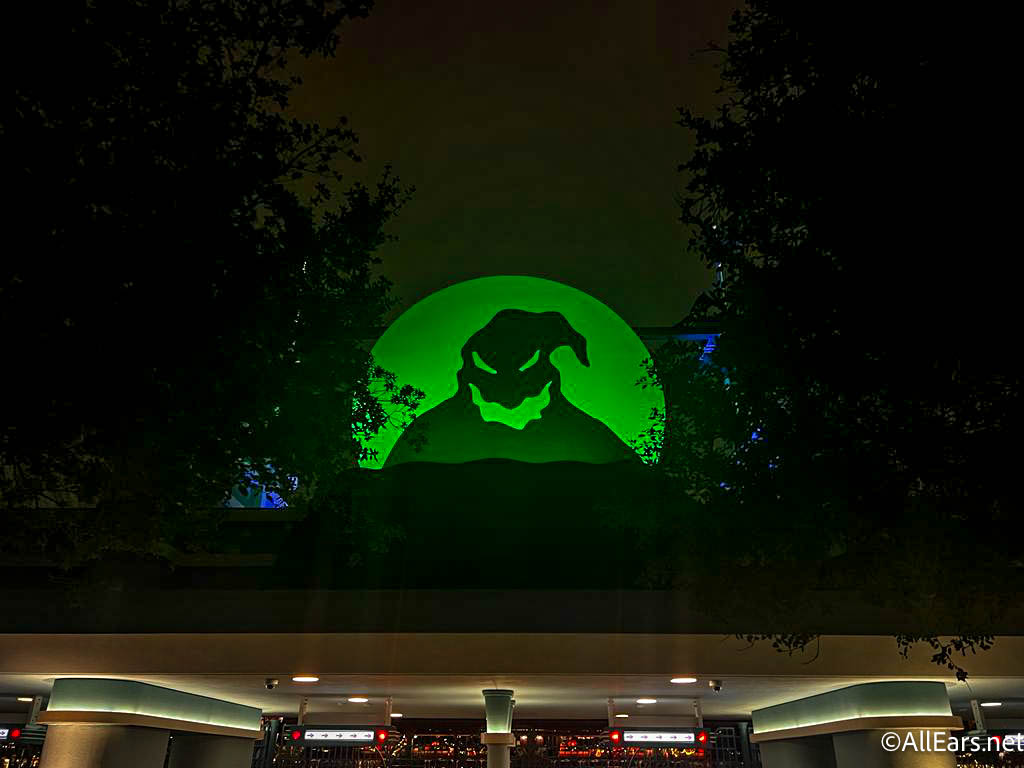
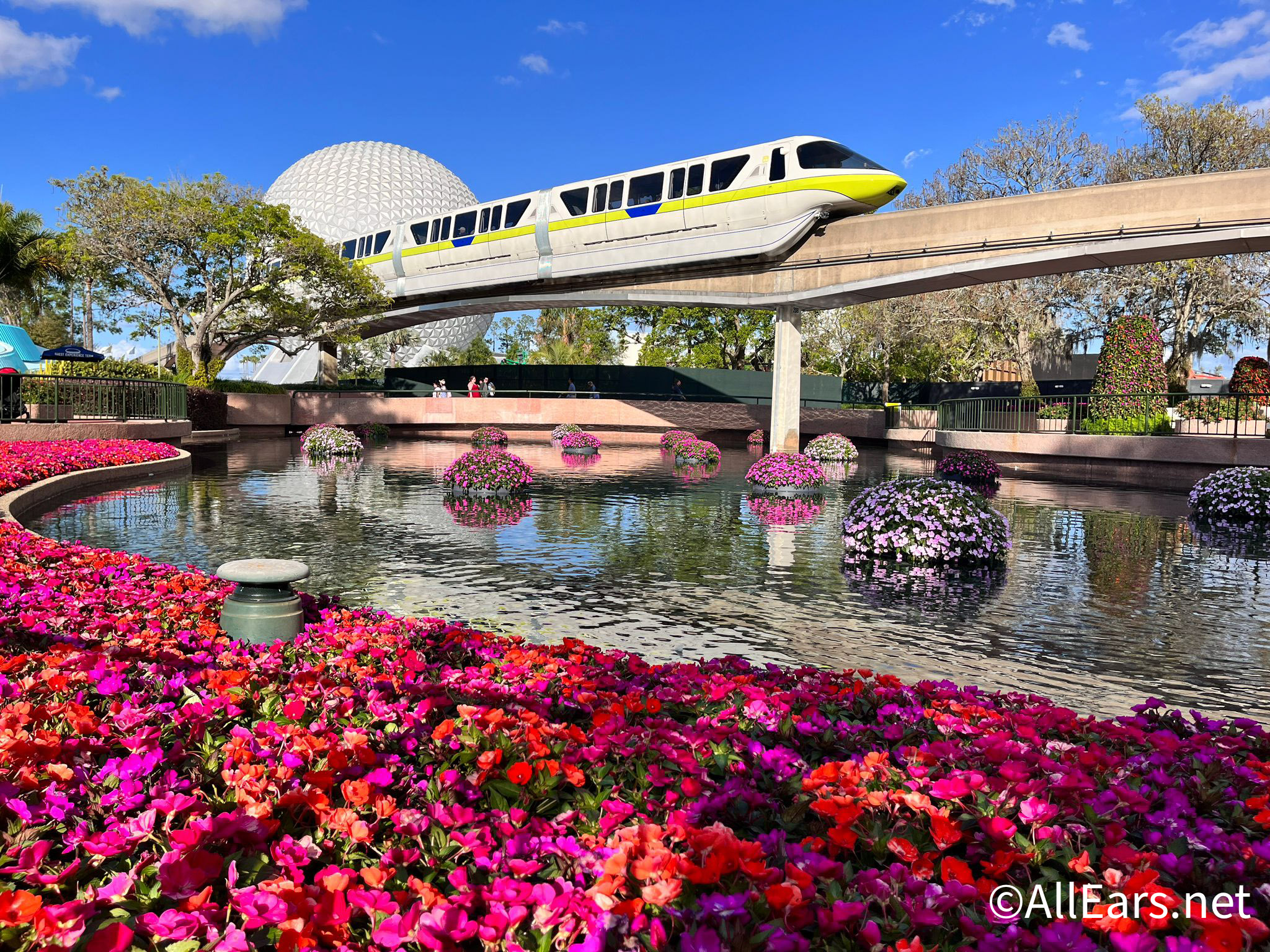
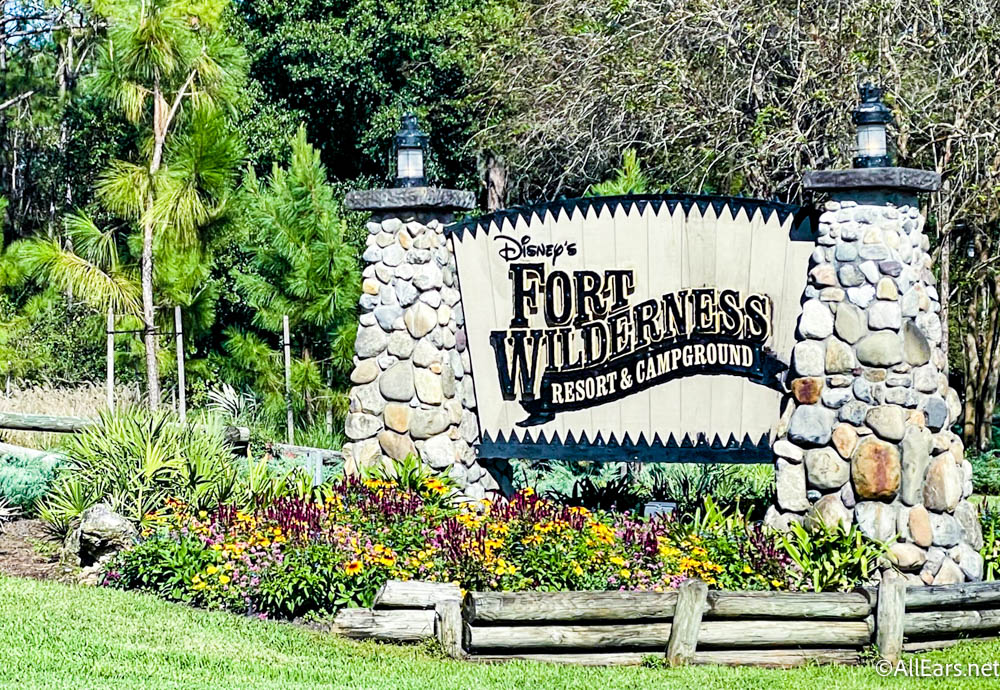

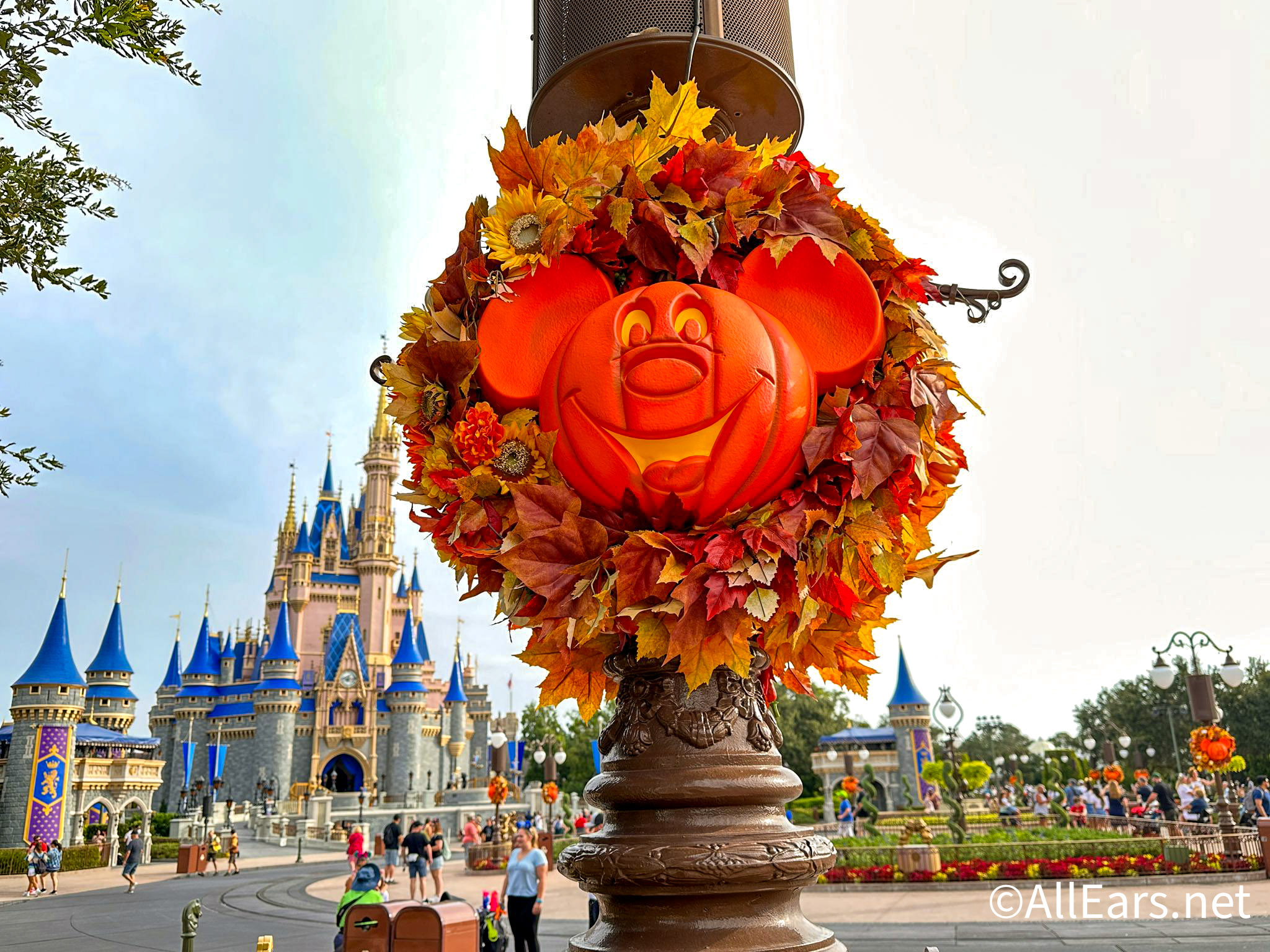


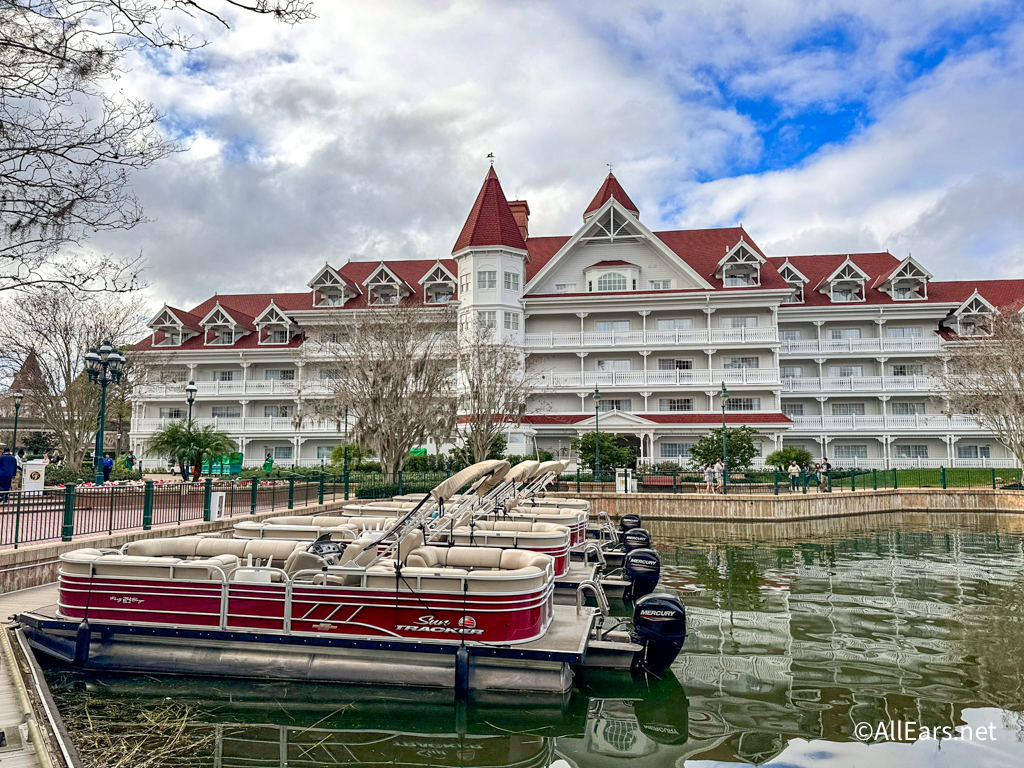
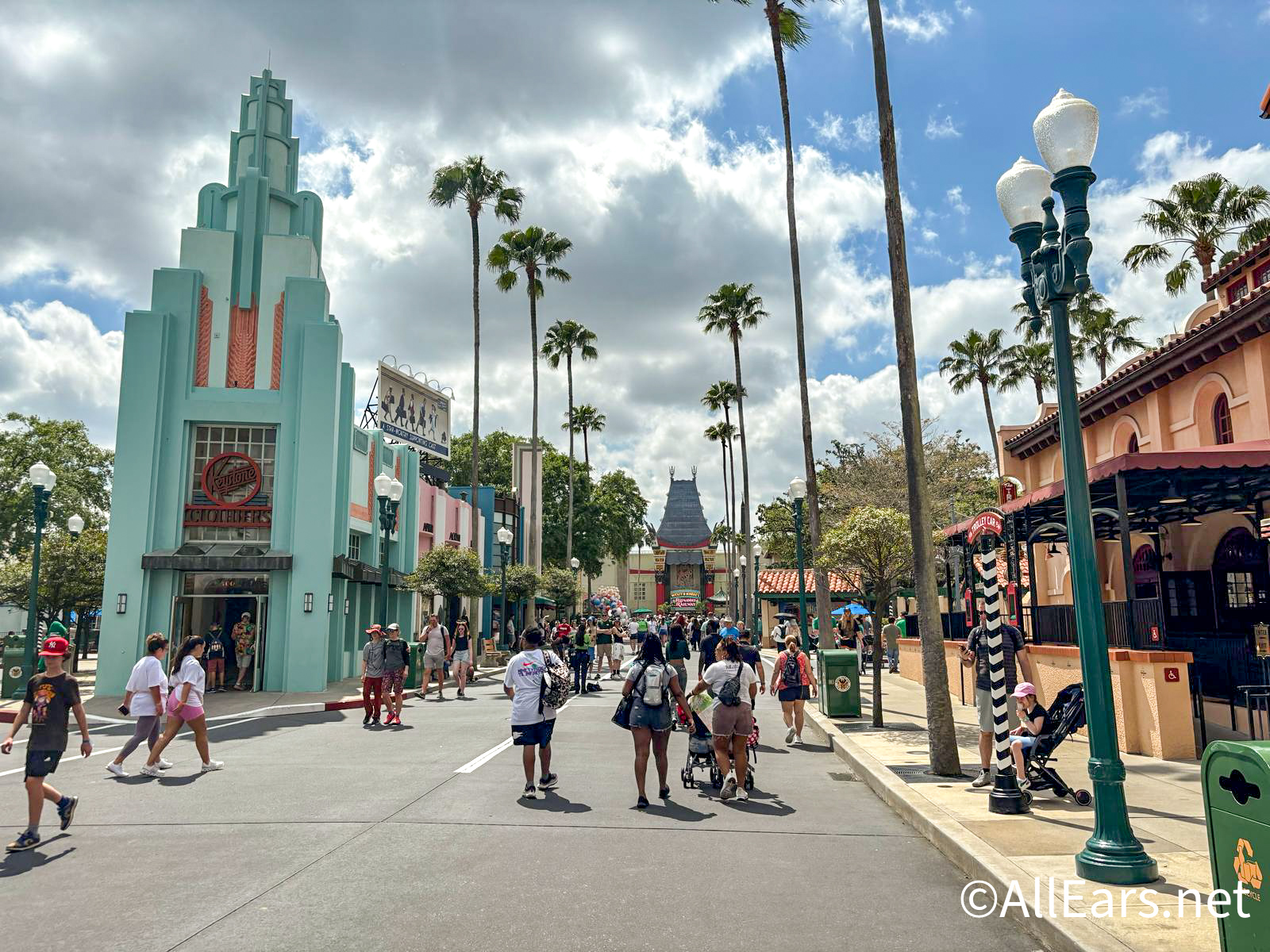

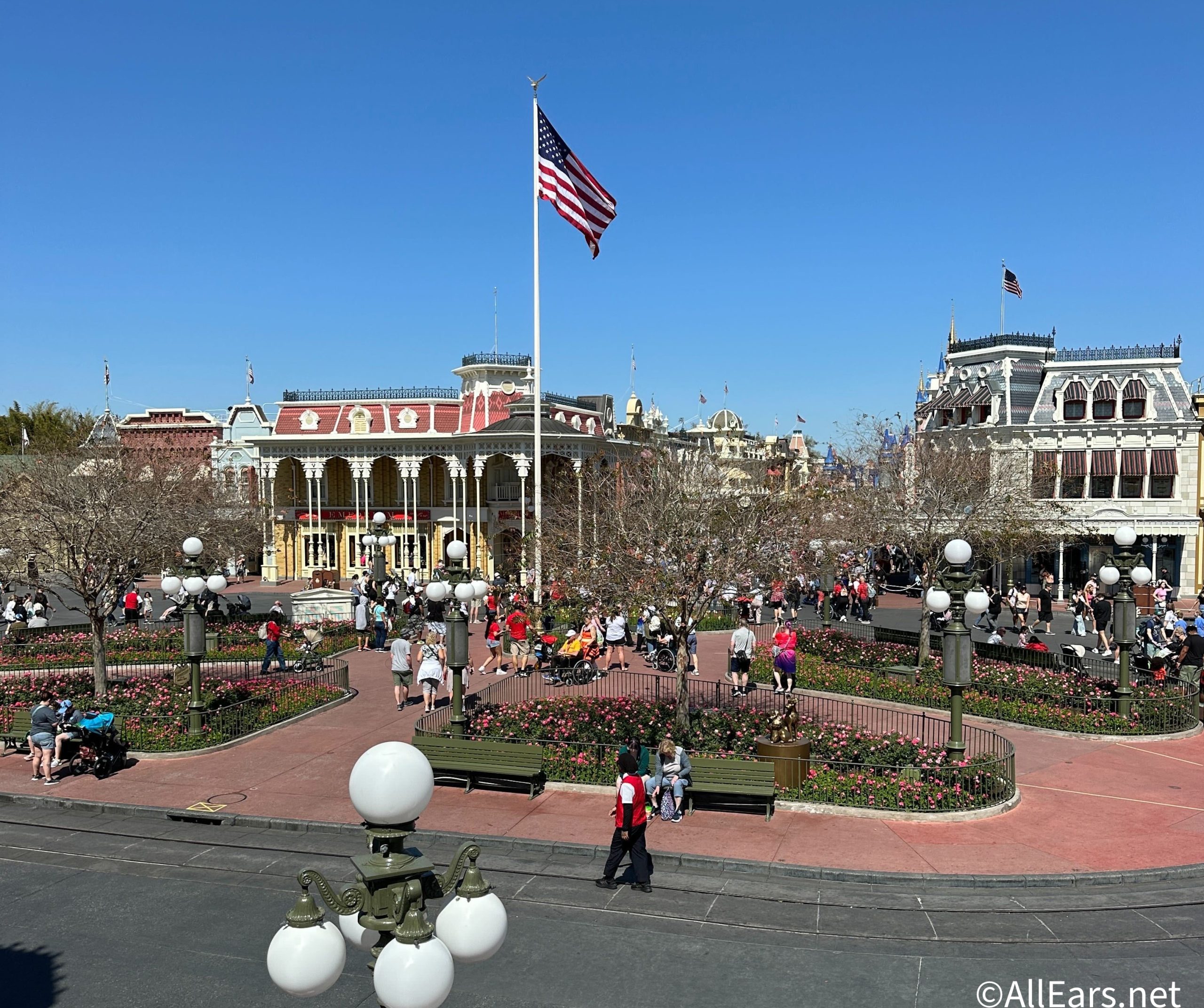

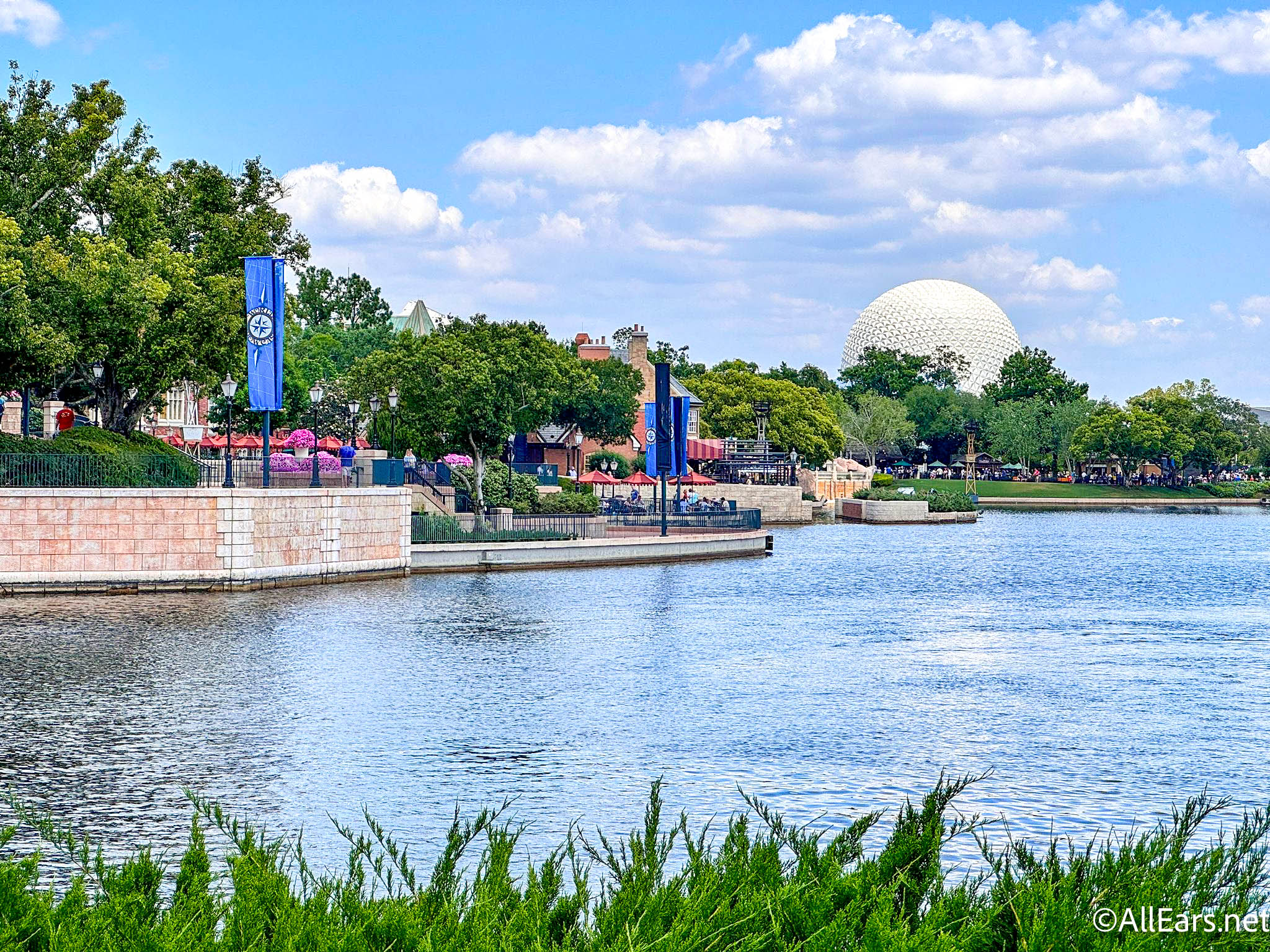

Are we allowed to take tripods into the parks? I just ask as selfie sticks are mono pods and not allowed. Thanks.
Scott replies: As of today, tripods are allowed in all the Walt Disney World parks.
Wow! Awesome photos!! Somehow Part 1 and 2 of this article came to my attention literally 2 days before our trip to Walt Disney World!! And I am soooo grateful! I had the camera and the tripod so I went to the local camera shop to pick up a cable shutter release. They didn’t have the neutral density filters so I ordered the ones you recommended from Amazon.com and had them shipped to our Disney hotel! I printed off both of your articles so I could bring them with me…I wanted to follow your instructions exactly. I finally stepped out of the box and took the camera off of ‘auto’ mode (which is what I had always used in the past to take mediocre fireworks photos) and had a great time experimenting with your suggestions. And the result…some absolutely amazing photos!! People are asking me if I could give them lessons…lol!! I forwarded your articles to them 🙂 Heartfelt thanks for the amazing advice…I can’t wait to go back (hopefully in December) and take more pictures!
Scott replies: Hi, Michelle! I am so happy you got some great results! If you do go in December and are there during the AllEars.net 15th Anniversary celebration, look me up!
Hi Scott;
Beautiful fireworks pictures! My question is..is there any way to get these results hand held?
Becky*
Scott replies: Sorry, Becky, exposures of this length require a tripod. Remember, you can put tripods in the park lockers until needed.
What amazing photographs! I espcially like the second Dumbo photo. Thanks for sharing how you accomplish such shots. It helps me get better photos than I would otherwise, even though I could never come close to what you (or Barrie, or Lisa) pull off.
Scott replies: You are most welcome, Craig! I am betting you can get shots as good as ours. I know that because I once thought the same thing. As the say at Epcot, if you can dream it, you can do it!